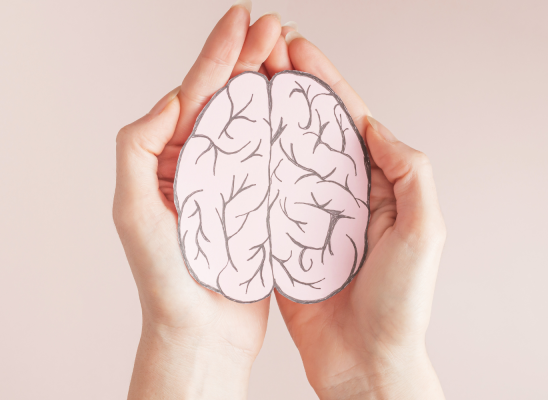Be present or be mindful - Aren’t they the same thing?

Online test
Find out the severity of your symptoms with this free online test
One of the things that make human beings amazing is our metacognitive abilities. Meta-what? In fancy psychological terms, it means humans have higher-order thinking that allows us to analyze and control our thinking processes and our memories. We can think about how and why we think as well as how and why we have memories. We are aware of our abilities to think and form memories, we have thoughts and feelings about those abilities, and we evaluate them in the past and for the future. We are not born with this ability; it develops over time.
As wonderful a gift as this higher-order thinking is, it can also cause problems. Our brains are highly imaginative with a tendency to take some thought processes into realms that cause distress. Take excessive rumination and worry for example. Not only do we worry about things in our lives, but we also worry about how we worry about things. Sometimes people get lost in their ruminations, thoughts, and worries making it seem like they are in another world despite being physically here.
What does it mean to be present?
If you’ve ever heard the phrase “being present,” understand it is not just a new-age term. Try to think of a situation where you were with another person. Maybe you’re having a conversation over coffee, or attending an event together. Later, after the event is over, you try to remember the conversation, or the details of the event but can’t remember because you were worried about something unrelated? Or someone is telling you about their relationship problems to ask your advice, but you’re thinking of your own problems instead and they say they feel like you’re not even there? In both situations, you were not “present.” Instead, your metacognitive brain was doing its own thing.
Being present means actively engaging in what is going on right now. Active engagement requires full attention and participation at the moment with your entire awareness focused on now. Using the scenarios above, it means redirecting your attention to the person you are with and actively engaging in conversation instead of letting your mind wander. It means training your brain to engage with the conversation occurring now and not the one in the past or future.

When you think of being present, think of little kids. Observe how they are fully engaged with whatever they are doing, especially when playing. Nothing from the past or the future matters and if you asked them about something in the past or the future, they would have a hard time understanding why you’re asking that. While you are able to think about how something in the past or future influences their play time, if it does not matter to the playing they are doing right now, it is irrelevant.
What does it mean to be mindful?
Mindfulness builds on the concept of being present. Being mindful is a mental state of focused awareness to the present, acknowledgement of thoughts, feelings, and sensations without judgment. Mindfulness is the practice of being mindful. Being present and mindful requires the utilization of our delightful meta cognitive abilities. First, we recognize that we are thinking about something that is not in the present, then we bring our attention and focus back.
Why are these two practices helpful for people who compulsively pull hair?
People who compulsively pull hair can benefit from both of these practices.
- Improve awareness – Many people find that when they “zone out” or engage in automatic activities, they pull hair without even realizing it. The practices of being present and mindful help them recognize when and how they are pulling.

- Identify triggers – Once someone is present, they can learn to recognize cues that precede hair pulling.
- Identify negative thoughts and feelings – Practicing nonjudgmental awareness with mindfulness trains someone to recognize thoughts and feelings, especially the negative automatic ones that either precede or follow hair pulling behaviors. After they are identified, they can be addressed in therapy.
- Separate behavior from the person – The mindfulness process involves being completely present, yet observational. This means that you are noticing thoughts, feelings, and behaviors, but not making any kind of judgment about them. The thoughts are occurring, but you are not your thoughts. Emotions are experienced, but you are not the emotions. Behaviors occur, but they are separate from you.
- Making a choice - Separating hair pulling behavior from the person who engages in it give the person the opportunity to recognize what is happening and make a conscious decision about what to do next.
With meta cognition, we have the power to make choices about what happens in our thinking lives. For people who struggle with compulsive hair pulling, practicing being present and mindful can be the first step to taking control over the behaviors.
Online test
Find out the severity of your symptoms with this free online test
Start your journey with TrichStop
Take control of your life and find freedom from hair pulling through professional therapy and evidence-based behavioral techniques.
Start Now



